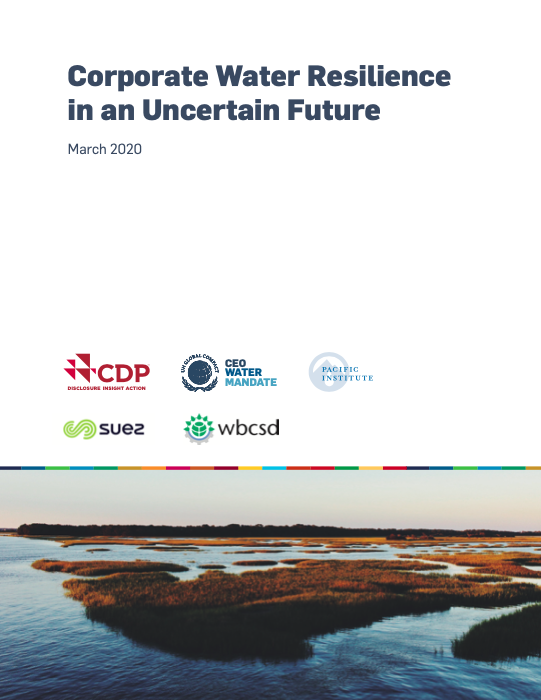Corporate Water Resilience in an Uncertain Future

Corporate Water Resilience in an Uncertain Future
Overview
Around the world, businesses are experiencing adverse physical effects of climate change, from increased operational costs and disrupted production to social unrest in communities in which they operate. These impacts are most prominently expressed through changes in the water cycle, including precipitation shifts and extreme drought.
To build resilience to a changing climate and thrive into the future, businesses will need to adequately consider, mitigate, and adapt to the water-related risks of climate change to their core operations, their local communities, supply chains, and broader networks. Towards this end, this discussion paper summarizes the existing literature on the physical water-related risks of climate change to businesses, and provides actionable examples of how businesses can address these risks and create corporate water adaption and resilience.
The paper was produced by the Pacific Institute, in partnership with the UN Global Compact’s CEO Water Mandate, which the Pacific Institute serves as Co-Secretariat for, along with CDP, Suez, and WBCSD.
Key Findings
- Businesses throughout the world are already experiencing water-related impacts of climate change.
- Businesses need to address water-related risks arising from climate change impacts to not only their direct operations, but also their local communities, supply chains, and broader networks. Failure to do so threatens business continuity and long-term value creation.
- Despite a growing number of businesses assessing and managing the potential physical impacts of climate change on their business operations, action is not at the scale, degree, or urgency warranted. This situation has been compounded by the lack of structured approaches to support businesses on their climate resilience journey, although this is changing.
- Adaptation to water-related risks of climate change will require dramatic improvements in the efficiency of water use, the elimination of pollution in order to ensure the water remaining in water catchments is safe to use, investments in healthy catchments and water infrastructure, support for adaptive water governance, and the strengthening of the adaptive capacity of local communities.
- There are case examples of company adaptive strategies to build their water resilience. Solutions are clear, action needs to be accelerated, and partnerships will continue to be important.

